Content
- 1 Features of mushrooms grown in the garage
- 2 How to grow oyster mushrooms in a garage
- 3 How to grow mushrooms in a garage
- 4 Where to start a business?
- 5 Business registration
- 6 What conditions are required for work
- 7 What preparation of the premises is needed before growing?
- 8 Champignon cultivation technology
- 9 Growing process
- 10 Sales channels
- 11 Calculation of financial investments
- 12 Profitability and payback of the mushroom business
- 13 What risks await an entrepreneur?
- 14 What should be the basement
- 15 Cultivars for cultivation
- 16 Substrate preparation and planting
- 17 Care and cultivation
- 18 Harvesting
- 19 Video "Technology of growing mushrooms"

Growing oyster mushrooms in the garage
Growing oyster mushrooms in the garage is not only getting a tasty product for home cooking, but also an opportunity to open your own business. In this process, a special algorithm is required.
To get a decent harvest of mushrooms with your own hands, you will need to adhere to fairly simple rules, which are suggested to be learned from this article.
Features of mushrooms grown in the garage
For growing mushrooms in the garage, such types are available as:
- White.
- Chanterelles.
- Butterlets.
- Oyster mushrooms.
- Champignons.
Each owner decides for himself which species to take for himself, but you should know that forest mushrooms grow much longer than popular champignons or oyster mushrooms. From planting to harvesting, these products take 30 - 40 days, and they can be grown throughout the year, which attracts many mushroom pickers.
Oyster mushrooms grow well even on a balcony, at an air temperature of about 16 ° C and in the absence of direct sunlight. Nowadays, it becomes dangerous to eat wild mushrooms, which is associated with the accumulation of harmful substances in them for human health.
This contributes to the fact that an increasing number of people are engaged in the cultivation of organic products.
To obtain mushrooms, you can use:
- Basement.
- Garage.
- Loggia.
- Even the kitchen can be adapted for growing a small amount of products, where they will grow in glass jars.
Oyster mushroom is a popular mushroom all over the world. Its positive properties include:
- Easy to cultivate.
- Has resistance to a complex of diseases and pests. Mushrooms contain:
- protein, up to 6%;
- fat, up to 4%;
- carbohydrates, more than 4%;
- valuable trace elements and amino acids.
- The presence of a large amount of vitamins such as A, B, B1, B2, C, D, PP.
- Has bactericidal properties, helps to remove toxins, radioactive elements and radionuclides from the body.
- Alcohol tinctures of fetal bodies are used for the prevention of thrombophlebitis, hypertension, atherosclerosis.
- Mushrooms are used in diet food for those who want to lose weight. They provide a feeling of fullness.
The most widespread mushroom in the world is champignon. It is used in many world cuisines and for the preparation of dishes by famous culinary specialists from different countries. Even the ancient monarchs considered champignons a delicacy, and their price was quite high.
These mushrooms include:
- Fats.
- Carbohydrates.
- Organic acids.
- Minerals.
- Vitamin complex.
- Nitrogen compounds: amides; amino acids; peptones; pyrimidine and purine bases.
- Vitamins: PP, E, D, B1.
- The absence of sugar allows the use of champignons for diabetics.
- Champignons can be consumed during a diet, they are high in calories, but a lot of protein, which is easy to digest.
- Content in the composition of special substances, destroys cholesterol plaques.
- They also help in the fight against tumors.
- Eating champignons reduces the risk of heart attack and atherosclerosis.
- Dry they are recommended for hepatitis and stomach ulcers.
- They have a positive effect on the condition of human skin.
How to grow oyster mushrooms in a garage
Tip: To grow any mushrooms in the garage, you should prepare a special pit, disinfect it with a solution of 4% lime and ventilate it for two days. Divide it into two compartments for germination and growth of mushrooms.
If oyster mushrooms are needed, growing them in the garage begins with the preparation of the substrate.
It can be:
- Sunflower husk.
- Wood sawdust.
- Corn cobs.
- Straw of cereals.
Tip: Chopped straw or husk is the best substrate for mushroom production.
Pasteurization of materials and preparation itself is carried out.
For this:
- A mixture or other material is poured with warm water at a temperature not higher than + 25 ° C for 20 minutes. In this case, the mixture must be stirred.
- Dirty water is drained from the container in which pasteurization was carried out.
- The mixture is wrung out.
- It is filled with hot water, the temperature of which is from +70 to + 80 ° C, the oppression is set on top for about 6 hours.
- The water is drained.
- The straw with husks is wrung out.
- To increase the nutritional value of the substrate, and therefore the fruit formation in it, additional components are introduced. It can be:
- 0.5% superphosphate;
- 2% gypsum;
- 0.5% urea;
- 2% ground limestone.
- When adding additives, their moisture content is about 75%, which allows the elements not to be washed out with water. Additives are separately pasteurized and then added to the substrate.
To grow good mushrooms, it is necessary to make not only a high-quality substrate and maintain proper agricultural techniques, but also prepare the correct container for oyster mushrooms, that is, bags.
To do this, you can use ordinary plastic bags measuring 40x60 centimeters or 50x100 centimeters. Holes are made in the containers, through which the mycelium will "feed" the fruits. The pitch of the holes, up to two centimeters in diameter, in oyster mushroom bags is from 15 to 20 centimeters, in a chaotic manner.
The substrate is poured into the bag:
- The substrate layer is 15 centimeters thick.
- Mycelium layer.
- Substrate layer up to 20 centimeters.
- Mycelium layer.
Thus, the bag is filled up to 2/3 of its volume.
Tip: Lay the substrate and mycelium evenly. The total weight of the bag should be approximately 5% mycelium.
The stuffed bags are tied, transferred to the prepared garage and hung, as shown in the photo.
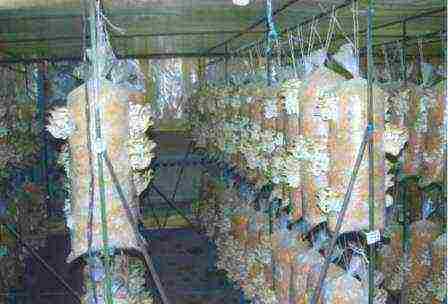
Laying the substrate and mycelium
When growing oyster mushrooms and caring for mushrooms, several conditions must be met:
- The temperature in the room should be strictly from +22 to + 24 ° С, and the temperature of the substrate in the bags, maximum + 28 ° С. Indoor humidity from 90 to 95%. No illumination is required for germination and "absolute infection" of the substrate with the fungus.
- After the substrate is overgrown with mycelium, the bags are transferred to another room for growth, where it will begin to bear fruit.
- The bags are placed over the entire area one on top of the other, but not tightly, a passage should be left between them, and there should be good ventilation (see Ventilation in the garage: the right choice and installation). The bags can be hung from the ceiling.
Under what conditions does oyster mushroom bear fruit?
Advice: Fruiting of oyster mushrooms occurs only with strict adherence to the conditions of agricultural technology.
In this case, it is necessary:
- Maintain the temperature within +12 - + 18 ° С, and the air humidity from 90 to 95%. Mushroom plugs or oyster mushroom embryos will begin to appear in the holes of the bags, which will form the bodies of mushrooms in the future.
- You can maintain the required humidity yourself, using standard sprayers or by installing a number of containers filled with water in the room, or using special installations.
- When sprinkling indoor air, avoid getting liquid on the bags and the formation of even small puddles on the floor.
- The lighting should be on for exactly 12 hours. At the same time, it is enough to have only 100-180 suites, as in cloudy weather. For this, standard daytime running lights are suitable (see Garage lights).
- We must not forget that the oyster mushroom needs to provide rooms ventilated with fresh air, which requires a high-quality ventilation device.
Tip: The concentration of carbon dioxide in the garage should not be higher than 1%. In addition, it should be borne in mind that mushroom spores during fruiting can cause coughing and serious allergies. To do this, you must use a special protective mask, respirator.
How to grow mushrooms in a garage
The video shows a detailed cultivation of champignons in the garage.
A brief guide to the process looks like this:
- A substrate is being prepared in which the mushrooms will grow. For this:
- 30 kilograms of straw is taken per square meter, which is moistened with water from a hose for four days;
- straw and manure are stacked alternately to form about 4 layers of each component;
- after 7 days, 7 kilograms of gypsum is added, everything is mixed with a pitchfork;
- after 4 days, everything is mixed well again, watered well with water and 5 kilograms of fine chalk and 2 kilograms of superphosphate are added;
- after 4 days the components are mixed again
It will take up to three weeks to prepare a high-quality substrate.
- Compost is spread on shelves or in boxes - 100 kilograms per square meter of area.
- Mycelium or mycelium are planted.
Tip: When sowing mycelium, you should monitor the temperature in the room. It should not be higher than 25 ° C, and the humidity should be about 70%.
- The mycelium is buried 7 centimeters into the substrate.
- Covered with a layer of substrate up to 10 centimeters thick.
- The spores of the fungus are stacked in a checkerboard pattern with a distance of 20 centimeters between them.
- Three weeks after planting, mycelium appears.
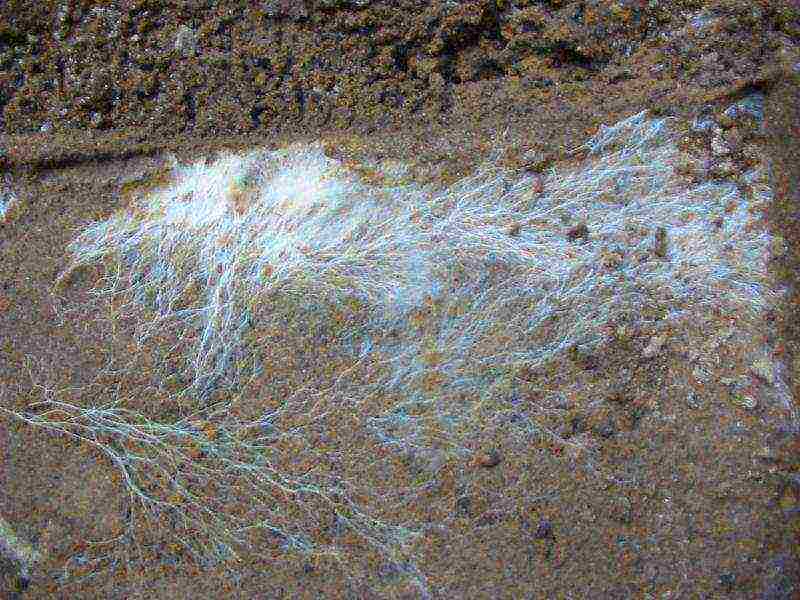
Mycelium appearance
- A cover soil mixture is prepared from one part of chalk and 9 parts of peat.
- The mixture is applied on top of the substrate layer on which the mycelium has sprouted. Layer thickness up to 5 centimeters.
- In order to obtain high quality champignons, cultivation in the garage should be carried out at a temperature in the range of 14 - 17 ° C.

Growing champignons
How to care for mushrooms
Proper care of mushrooms requires:
- Regular watering of the substrate.
- Maintaining optimal humidity and temperature in the room.
- The first watering of the substrate should be performed 10 days after placing the casing layer, from a watering can of small height in small droplets. In this case, water should only be on the upper layer of the substrate, and not penetrate into the compost. Otherwise, the mycelium will start to rot and disappear.
- The humidity in the room for the growth of mushrooms should be 75 - 80%, for which racks are installed and basins of water are placed on them.
- The room should be ventilated at least once a day.
With proper observance of all the intricacies of growing mushrooms, you can get a high-quality crop in large quantities.
Also on our resource you can learn in detail about growing onions on a feather in the garage.
Growing champignons in the basement is most often perceived not as a business idea, but as a strange hobby of an amateur gardener. However, with such an occupation, you can really make a profit! To do this, you just need to competently approach the matter: draw up a business plan, calculate profitability and investments, assess risks.
If you are interested in the idea, let's get down to the debriefing!

Where to start a business?
Growing mushrooms in the basement of a residential building is a very real idea for implementation. Why not, because the microclimate is fully consistent with the conduct of such an activity, and mushrooms are not picky about the conditions at all.
A step-by-step algorithm for organizing a business can be presented as follows:
- Understand the technology of growing mushrooms.
- Prepare a basement for placement of seedlings.
- Disinfect the premises.
- Buy mycelium.
- Purchase compost or raw materials for its production.
- Plant the mycelium in the substrate.
- Control temperature and humidity levels.
- Harvest according to the prescribed rules.
- Find points of sale and sell the product.
We will analyze each point of organizing the cultivation of mushrooms in your own home.
Business registration
The cultivation of champignons as a business (in the basement) must be officially registered. Unless, of course, the volume of your production is limited by the limits of "a batch for yourself, a batch for neighbors."
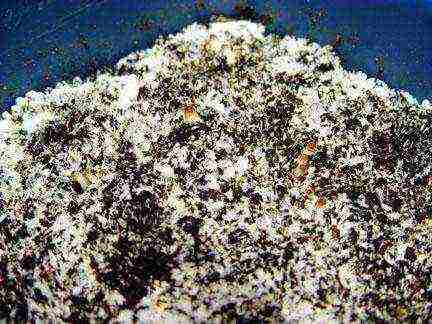
When it comes to business specifically, and especially about implementation through retail outlets, cafes, etc., you cannot do without documents.
Do not worry if you haven’t come across this question before. It's pretty simple. Let's represent your actions in the form of a step-by-step algorithm:
- It is necessary to register an individual entrepreneur. To do this, you need to go with your passport to the nearest tax office.
- As an indication of the activity, you choose agricultural production and sale.
- With this type of work, you can count on a single agricultural tax - 6%. This is a very profitable taxation option.
- The room for growing mushrooms is subject to inspection by employees of the phytosanitary inspection. The basement must have a permissible background radiation. After verification, you will be issued a certificate.
- Also in the phytosanitary inspection, you will check the goods before selling. No serious client will cooperate with you without a certificate of quality. The validity period of one certificate is the "life" period of one batch of compost. You will provide this data during registration.
Next, let's take a closer look at the conditions for growing mushrooms in the basement.
What conditions are required for work
Growing mushrooms in the basement of a private house follows the same principles as in any other place. We'll talk more about the technology later. Now let's figure out what conditions are necessary to get a bountiful harvest of mushrooms.
Growing champignons in the basement of a garage or other room presupposes a solid, solid building. We will analyze the rest of the requirements in stages:
- Contrary to popular belief, the floor should be covered with concrete, not dirt.
- The room itself is maximally isolated from the environment, excluding the possibility of contamination sources from outside.
- Another difference from other types of vegetation grown for sale: champignons do not need a constant source of light. This translates into substantial savings in equipment and utility bills. It is enough to hold one lamp in the basement to work with convenience.
- Even in a small area, it is possible to organize the cultivation of a significant amount of the crop. To do this, the containers are installed "in layers", placing ordinary racks in the basement. The mushroom growth height is small, which allows you to make tiers at a short distance.
- It is important to consider this feature: the mushroom compost will emit unpleasant carbon dioxide. It is unpleasant because it leads to mustiness. And mushrooms do not tolerate such a situation. Establish an efficient ventilation system to avoid problems.
- Do not overdo the ventilation of the room. Drafts are also the enemy of your seedlings. It is also worth installing a mosquito net with small meshes on the ventilation holes to prevent insects from getting inside.
- Mushrooms, however, are unpretentious to the temperature regime. Try to maintain an "even" level, that's enough. In summer, a fan is used if necessary. Growing champignons in a basement in winter may require a heating system (if the room is very cold).
- Control the humidity level in the cellar. It can be reduced by ventilation, and increased by a simple spray bottle with water.
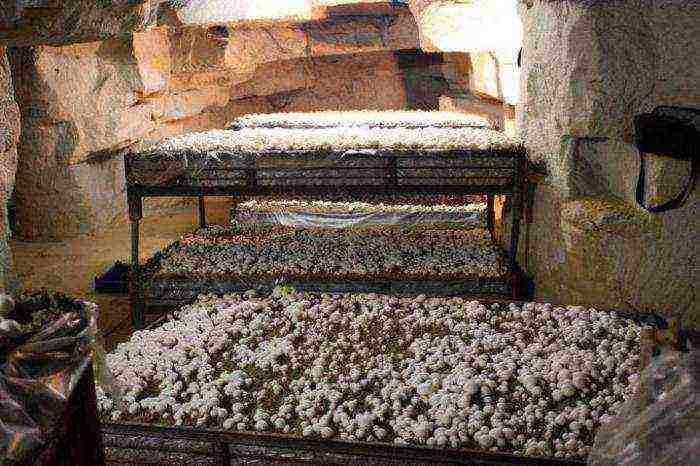
What preparation of the premises is needed before growing?
Like many other mushrooms, mushrooms are susceptible to diseases and parasites.Growing in the basement (the technology of the process is, in fact, extremely simple) requires careful preparation of the place before work begins. Preliminary work consists of disinfecting the room, treating surfaces, removing mold and even a chance for its appearance in the future. If you do not approach this issue carefully, the crop can be spoiled. It's a shame to destroy a case for several months out of sheer laziness, isn't it?
If you do not want to check the resistance of fungi to a harmful environment, prepare the territory like this:
- Examine the room for insects (it is important if vegetables were previously stored in this cellar). If you find at least a few individuals, be sure to process chlorophos.
- All surfaces are covered with lime, to which copper sulfate is added.
- Use a sulfur stick to fumigate the room.
- Also, the space is sprayed with a 4% formalin solution.
- Want to insure yourself? Take a deep container of sawdust and sprinkle it with disinfectant. Place the box at the entrance to the cellar. It will serve as an additional barrier for pests.
- After carrying out the manipulations, carefully check the basement. Otherwise, you can harm not only the seedlings, but even your own health.
Sometimes simple airing does not give much results. This indicates the fact that you need an additional ventilation system. For example, you can put additional fans above the racks with mushrooms. If your business expands, it makes sense to invest further in installing air purifying filters in the ventilation system.
Champignon cultivation technology
What is the principle of planting champignons? Growing in the basement (process technology, to be more precise) has some features:
- Zoning. It is recommended to divide the basement into two parts - for the incubation period and for direct distillation. The fact is that you will need to observe different temperature conditions. Zoning the space will greatly facilitate the task.
- As mentioned, each period needs its own temperature. For cultivation - 23 ° C, distillation - 12-17 ° C.
- Carefully follow the composting conditions indicated on the packaging. Horse manure is considered the best base. When using it, an increased yield is noted.
- A self-made substrate will always be better than a purchased one. But to save time and effort, it can still be purchased.

Growing process
When all the conditions for growing mushrooms in the basement are met, you can proceed directly to the process. The easiest way for beginners will be to imagine it in the form of a step-by-step algorithm:
- We plant the mycelium in the substrate. Typically, entrepreneurs purchase mycelium ready for planting to grow at home. Most often it is a base grown in special laboratories in which ideal conditions of sterility are maintained. They buy mycelium for planting through intermediaries - on the Internet, in All for Garden stores, as well as directly from suppliers.
- It is very simple to calculate the required amount of mycelium: 1 m2 - 500 grams of "living" medium. If you decide to grow mycelium from spores, you need 400 grams.
- The planting process is not very different from the usual one: you need to make holes about 5 cm deep. Properly prepared compost will feel a little springy. Keep a distance of at least 15-20 cm between the holes. Place a piece of mycelium in each hole.
- For planting spores, holes do not need to be made. The seeds are simply poured evenly onto the ground. The mushroom pickers will pave their own way.
- During the incubation period, the entrepreneur's task is to monitor the level of humidity and temperature. How to do this is described in more detail below.
- For permanent moistening of the earth, you can cover it with paper (cloth) and moisten it.
- 10-12 days after planting, cover the substrate with another layer of earth - literally 3-4 cm.The land is prepared in a special way: peat + lime + soil in a ratio of 5: 1: 4.
- The incubation period will end in 4-5 days. During this time, regularly moisten the air and soil with a spray bottle.
- The next growing period is forcing. At this time, the temperature in the basement is lowered to 12-17 ° C. Sometimes this is difficult to achieve, it is much easier to move the racks to another room. For this, in the section above, it was proposed to zone the basement.
- The mushrooms will start growing soon. Follow the rules for collecting them and do not over-ripen the mushrooms.
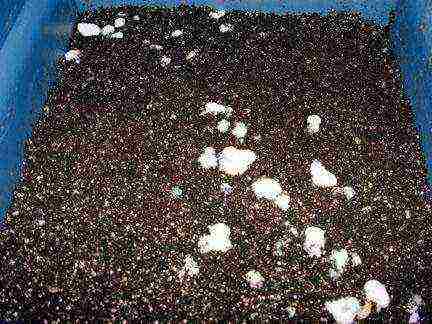
Sales channels
A rare person in our time does not use champignons. Growing at home in a basement can meet the needs of one family of mushrooms. But when it comes to business, of course, it is necessary to establish distribution channels. Finding clients is the secret to the success of this endeavor.
Growing champignons in a basement rarely involves a large amount of mushrooms harvested. Therefore, the surplus that family members do not use can be sold in the nearest market.
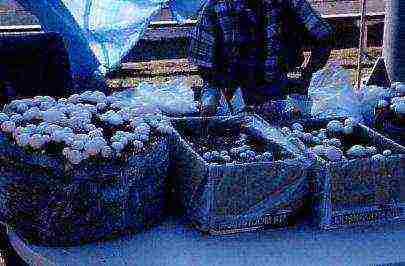
If the business is nevertheless put on stream and you want to find a more "solid" sales market, consider the following options:
- It is not necessary to sell the mushrooms directly to those who consume them. Using intermediaries can reduce your profits, but it will provide you with a steady stream of orders. Whether such a scheme is beneficial in your case, decide for yourself.
- Shops, supermarkets, cafes and restaurants can act as an intermediary for the sale of mushrooms.
- If you get a solid harvest, it makes sense to look for an opportunity to conclude a supply agreement with manufacturers of semi-finished products (champignons can be part of pancakes, pizza) or cookery.
- A good idea for promotion is to create your own website. On it you can post useful information for the consumer about mushrooms in general and champignons in particular. The price list, potential discounts, terms of delivery of products to customers, contact information are also indicated there.
Calculation of financial investments
Growing champignons in the basement, which is positioned as a business, will be quite cheap. Of course, it all depends on the resources you have and the planned production volumes. However, the absence of the need to pay for the rent of the premises is already a big plus!
It is also important to note that by growing champignons, an entrepreneur frees himself from such a large cost item as buying equipment. It is on technology that the lion's share of the budget is usually spent when organizing a business.
Consider the remaining cost items for 1 cycle of mushroom cultivation:
- raw materials for the manufacture of 1 ton of compost - 1000 rubles;
- mushroom mycelium - 500 rubles;
- creating the necessary conditions in the basement - 2000 rubles.
In total, we get the amount of 3500 rubles. As you can imagine, this is a ridiculous price to pay for starting your own business, albeit modest.
Profitability and payback of the mushroom business
If you have correctly considered all the requirements for growing white champignon in cellars, each mycelium can bring you 5-8 harvests. It is worth noting that only the first three will bring the main amount. Typically, the growing cycle is 1-2 months.
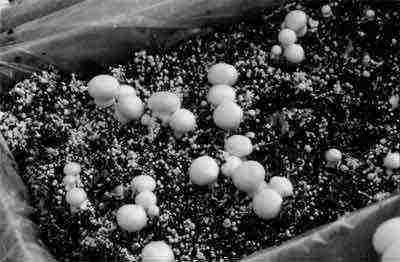
Follow these rules when harvesting:
- Control the state of the mushrooms - they must not be allowed to overripe.
- It is easy to determine the right moment for collection - the bottom of the champignon cap is covered with a white film.
- Champignons that are grown at home are not cut, remember this! They just need to be gently twisted around their axis and taken out.
- When you get the mushroom, sprinkle it with earth.
- If you follow simple rules, new mushrooms will grow for several more weeks.
Let's calculate the estimated profit from the business:
- 1 ton of compost is 200 kg of mushrooms, if all conditions have been met;
- 1 kg of this type of mushroom is now estimated at 100-150 rubles;
- profit from 1 harvest cycle - 20,000-30,000 rubles.
As you can see, the ROI is 100%. The investment will pay off within a few months.
What risks await an entrepreneur?
Growing champignons in the basement of a house, like any other business, involves certain risks for an entrepreneur. You need to know them and, if possible, minimize negative consequences.
- Although one cannot speak of high competition in this area, it is difficult to find a stable sales market. Start building partnerships before harvest, as the product spoils pretty quickly. You can familiarize yourself with the ideas for finding buyers above.
- Champignons are not particularly whimsical mushrooms. However, they are also susceptible to disease, as well as other factors affecting yield. Monitor compliance with all growing rules and the condition of the mycelium.
Growing champignons in the basement is a decent business option at home. It has a number of advantages at once: low competition, minimum starting budget, 100% profitability, ease of planting and caring for mushrooms. However, it is possible to get decent revenue only if the entrepreneur establishes a permanent sales channel. If you find enough buyers or one, but wholesale, you can recoup your investment and make a profit after the first harvest.
And be sure not to be too lazy to draw up a business plan before starting to implement the idea in order to make calculations in detail and outline the work scheme.
Often, the owners of summer cottages want to turn every square meter into a useful one. For example, a cellar or basement can be transformed from a storage place for a crop to a place to grow it. Today we will tell you how to grow oyster mushrooms in the basement, as well as champignons.
What should be the basement
When deciding how to grow champignons in the basement, first of all, you should think about providing the necessary conditions. As already mentioned, cultivation in a cellar or basement will be optimal for mushrooms. Some people try to grow oyster mushrooms and mushrooms in a house or apartment, but it is almost impossible to create comfortable conditions for the growth of mushrooms in a living room. Some mushroom pickers resort to planting in a brick garage, which can be a good substitute for a cellar.
Thus, growing mushrooms in the basement is currently the most economical and least labor-intensive of the above options. However, to get a rich harvest, you will have to carefully study the technology of cultivation of oyster mushrooms and mushrooms.
Necessary lighting
Growing champignons in the basement does not require any sunlight as mushrooms grow best in complete darkness.
Proper ventilation
Mushrooms in the basement require the correct microclimate, which is ensured by constantly maintaining the level of ventilation, temperature, and so on in the same indicators.
The ventilation system should not be open windows and doors that create drafts. Supply ventilation may also be insufficient to provide the culture with a constant supply of oxygen. The best option is a forced ventilation system, when metal grates and fine-mesh nets are installed on the air outlets, protecting the plants from the invasion of rodents and insects.
Humidity and temperature
When growing mushrooms and oyster mushrooms, it is important to ensure a constant room temperature and a high level of humidity. Champignons and oyster mushrooms in the basement are grown at a temperature of 12 to 27 ° C and a humidity of at least 65%.
To maintain the temperature in the basement, a thermometer is installed, as well as a heating system (warm floor, heaters). Since all artificial sources of heat dry the air very much, you will have to maintain the humidity manually, having stocked up with polyethylene and a sprinkler.
Zoning
The cultivation of champignons in the basement can be carried out in the most modest conditions in terms of area.To save usable space and plant as much planting material as possible, the construction of racks is recommended. The materials used are metal, plastic and wood. However, it is better to choose stainless steel as a metal, and treat wood with impregnations against rotting, which is inevitable in conditions of high humidity.
Sometimes bags, wooden boxes, wood chunks are used as a device for mycelium. All these options are possible to use, however, they are more troublesome.
Disinfection
In preparation for growing mushrooms in the basement, the disinfection stage is perhaps the most important. Insects and fungal diseases are enemies of the crop. The main source of all problems is high humidity. Therefore, if the walls are earthen or wooden, the development of the fungus is inevitable.
In this case, it is important to ensure the maximum remoteness of the room from the ground and natural wood. For this, the floors are poured with concrete, and the walls are laid out of bricks, plastered and treated with an anti-fungal solution. The ceiling is whitewashed with a solution of lime and copper sulfate. The entire room is disinfected (for example, with formalin, fumigated with a sulfuric gas) before each new planting. All elements of the arrangement are also carefully treated with antiseptics, and dishes and small parts are boiled.
Cultivars for cultivation
Not every farmer is ready to grow labor-intensive varieties of mushrooms. Oyster mushrooms and mushrooms are chosen as the best option for cultivation at home. However, among them there are different varieties.
Growing oyster mushrooms provides an opportunity to choose among many "home" species. These include Common Oyster, Oyster Oyster, Horned, Late and White Elf. There are other hybrids, but they are not much different from each other. Oyster mushrooms are very undemanding to soil and fertilizers, they give large yields and are resistant to infectious diseases.
Among the champignons, there are a number of hybrids that are offered by large nurseries and mushroom farms. They differ in size, shape and color, but are similar in taste and vegetative characteristics.
Substrate preparation and planting
There are two ways to prepare the substrate - buy ready-made in the store or do it yourself. Prepare the substrate a month before planting the mycelium, and use as ingredients:
- horse manure (if not, then cow or chicken droppings);
- straw;
- urea;
- superphosphates and fertilizers containing ammonium;
- a piece of chalk;
- gypsum or alabaster.
Horse manure and straw are preliminarily disinfected from parasites. Then the straw is soaked in a warm solution of water and ammonium nitrate for 24 hours. After the expiration of time, the straw is shifted with manure, moistened with ordinary warm water and left for several days, after which the composition is thoroughly mixed. Then gradually, at intervals of 3-4 days, the remaining ingredients are added, which are also mixed each time. When the temperature of the mixture has dropped to 25-23 ° C, the compost is ready for use.
The mycelium is bought in special stores, where it is grown under sterile conditions.
There are two types of mycelium - grain and compost. Make sure there are no green or black spots on it at the time of purchase.
After laying the substrate, you can start growing mycelium. For this, the compost mycelium is placed in pits up to 5 cm deep, located at a distance of 15–20 cm from each other. The packed mycelium is filled up and watered. The grain mycelium is simply scattered over the surface of the substrate.
Care and cultivation
During the development of mushroom filaments, the optimum temperature is 22–27 ° C, after their appearance it drops to 12–15 ° C. The first mushroom filaments appear 2 weeks after planting, after which the planting surface is covered with a mixture of peat, leaf earth and limestone (5: 4: 1).
Mushrooms love moisture, for which the first 2 weeks they are sprayed every 3-4 days.For this, the surface of the substrate is covered with polyethylene and sprayed with warm water. Further, it is better to suspend frequent hydration so as not to cause rotting of the mycelium.
Harvesting
The first wave of harvest awaits you 12-16 weeks after planting, and regular fruiting will last for the next 10-16 weeks. After each ripening, the mushrooms are carefully twisted, and a small layer of earth is laid in their place. After each collection, the substrate is watered with a solution of water and superphosphates.
Video "Technology of growing mushrooms"
This video will show you how to grow mushrooms at home.
Almost every owner of a private house also has a basement. Usually, the basement is used for storing vegetables and fruits, seaming and conservation are lowered there. But the basement is suitable not only for such standard purposes - here you can also grow mushrooms, or, more precisely, champignons. To do this, you can use both the basement already available on the site, or build a cellar from scratch.
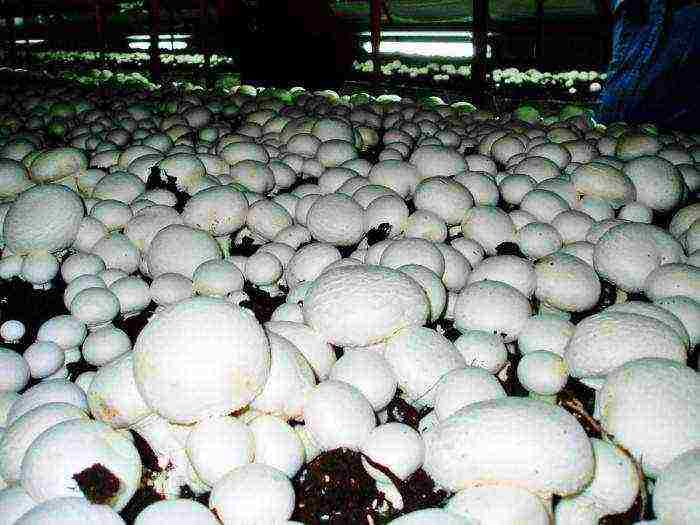
What is the peculiarity of growing champignons in the basement, and how a novice mushroom picker can grow a decent harvest without making gross mistakes - this will be an article about this.
What should be a basement for growing mushrooms
As mentioned above, mushrooms can be grown even in the basement where vegetables and seals were previously stored.
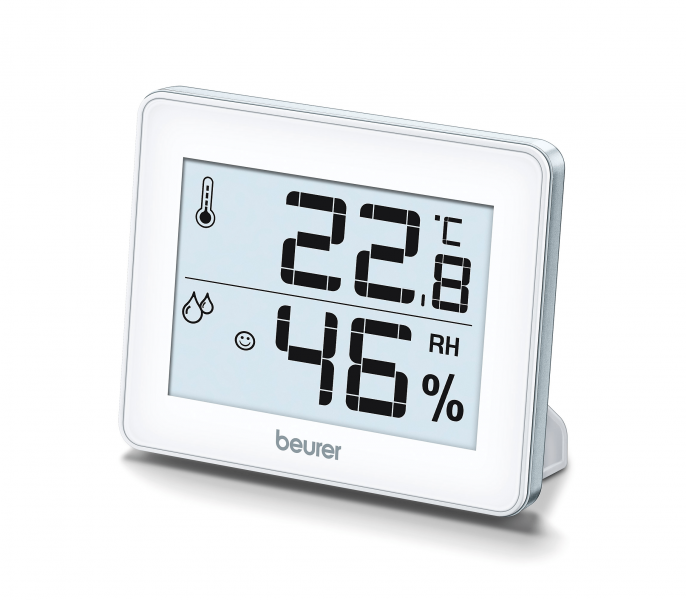
However, for the event to be successful, the basement must meet certain requirements:
- All basement surfaces must be isolated from the "outside world", that is, the walls, floor and ceiling of the basement in no case can be earthen. It is best to use concrete as a filling of the floor, and the walls and ceiling can be laid out of bricks, blocks or sheathed with wood. Insulation is necessary in order to protect the basement from the penetration of rodents and insects into it, as well as to prevent a sharp increase in humidity during periods of heavy rainfall, for example.
- Champignons need a certain air temperature, so the owner of the basement must provide the possibility of airing or conditioning the room in extreme heat, as well as heating for the winter period. As heaters, for example, it is convenient to use warm floors made of infrared film - it is enough to spread the canvas around the perimeter of the basement, and the mushrooms are provided with a comfortable temperature.
- Compost for mushrooms in the process of decomposition releases a lot of carbon dioxide, and mushrooms, like any plants, need oxygen. Therefore, the task of the mushroom picker is to provide ventilation of the cellar. A conventional supply ventilation system may not be enough, in which case you will have to install a forced ventilation system in the basement. You can not overdo it with airing, because drafts are destructive for champignon seedlings.
- Ventilation ducts and shafts must be closed with metal grates to protect the basement from rodents, as well as mosquito nets with a fine mesh so that insects do not get inside.
- Champignons do not need light - like all mushrooms, they grow in complete darkness. This fact, of course, allows you to significantly save on utility bills and makes mushroom cultivation a very profitable business. In the basement, it is enough to install a couple of ordinary lamps, which they turn on only when they are working with mushrooms.
- Even a small basement area is not considered a problem, because mushrooms can be grown on multi-tiered racks or shelves. It is better to make racks from metal, only it should be painted regularly to prevent corrosion. Wood is also suitable as a material for making mushroom shelves, but high humidity in the basement will lead to rapid decay of the wood. To protect the racks, they are treated with antiseptics, regularly repeating the impregnation.
- The humidity in the basement should be high, and its level depends on the stage of development of the mushrooms. You can control the humidity in the basement by ventilating or irrigating the floor and walls of the basement with water.
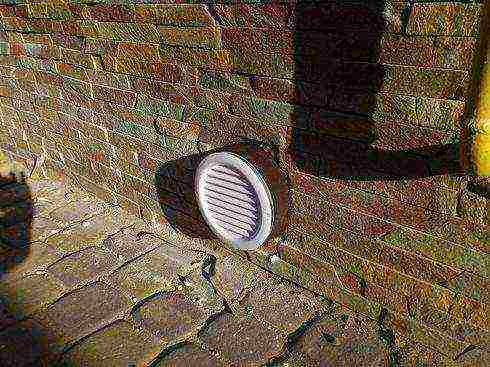
Growing champignons in the basement is good because you do not need large material costs to re-equip the cellar. The owner only needs to insulate his cellar in order to equalize the summer and winter temperatures. As insulation for walls and ceilings, you can use foam or mineral wool, for example. Rodents and mold do not start in these insulating materials, they are safe for increased basement humidity.
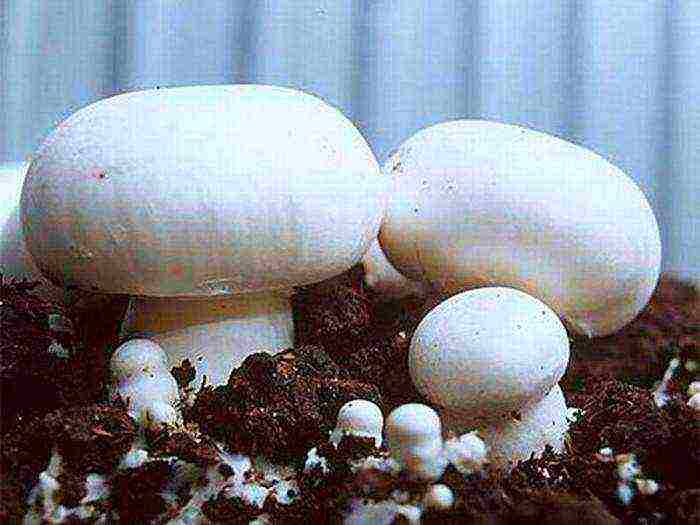
If the mushrooms are grown all year round, you will have to take care of heating the basement - this will be the biggest expense item, because the rest of the mushrooms are quite unpretentious.
Advice! It is much easier to correctly calculate the humidity level and temperature in the basement if the cellar is specially built for growing mushrooms. In addition, the new premises do not need disinfection.
Cellar preparation for mushrooms
So, it was decided to grow champignons in the cellar already available on the site or under the house. First of all, it is necessary to completely empty the basement, since champignons do not tolerate neighborhood, the presence of vegetables or fruits will be destructive for them.
Now the walls of the basement are insulated and insulated, and the floor is poured with concrete. If the cellar was already insulated and warm, it must be thoroughly cleaned, remove cobwebs, dirt and completely get rid of mold.
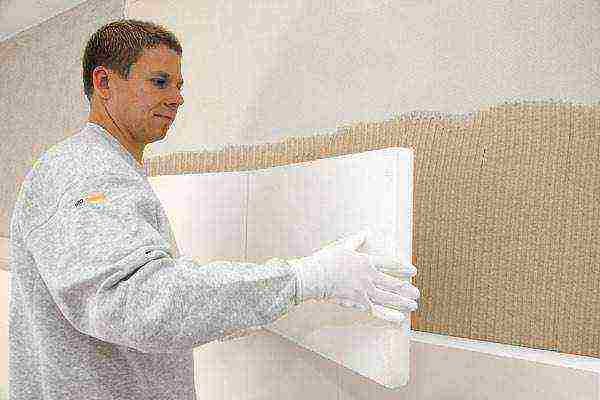
Important! The walls and ceiling of the basement where the mushrooms are grown must be dry, without condensation drops.
Now you need to equip ventilation and, if necessary, take care of heating.
The time has come for disinfection, the method of which depends on the state of the cellar:
- in the basement, where food was previously stored, there is a high probability of the appearance of fruit gnats, bugs or larvae. A chlorophos solution, which is used to treat all surfaces of the room, as well as racks and shelves, will help get rid of insects in the basement.
- if there is mold or mildew, you need to paint the walls and ceiling with lime. A greater antiseptic effect can be achieved by adding copper sulfate to the lime.
- the basement can be rid of all pests with a sulfur checker, which is bought in an agricultural store. The checker must be placed in the center of the basement, set on fire and tightly close all doors and dormer windows. In this state, the cellar is left for a day.
- another good remedy is a 4% formalin solution, which is used to treat the walls of the basement.
After any treatment, the basement must be thoroughly ventilated, otherwise there is a risk of suffering yourself from the action of disinfectants. And such compositions are unlikely to be useful for champignons.
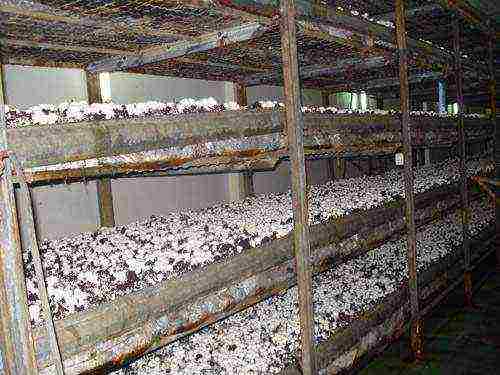
Attention! Ventilation, by the way, will help to identify possible ventilation problems. If the pungent smell does not disappear for a long time, you need to think about strengthening the ventilation system.
Further protection of champignons from parasites is to install a box with sawdust near the entrance to the basement, which has been pre-moistened with formalin or other special agent.
To make it convenient to work, as well as for the "comfort" of the mushrooms themselves, it is recommended to divide the basement space into several separate zones. Ideally, there should be three such compartments:
- The first is used for incubating mycelium, that is, for germinating fungal spores. Here the temperature should be constantly maintained at 25-27 degrees, and the humidity should not fall below 85%.
- In the second "room" there are racks with already growing mushrooms. Here it is permissible to drop the temperature to 17-19 degrees, and the humidity to 65%.
- The third area of the basement is optional, it is used for composting.
When the basement space is organized, processed and cleaned, you can proceed directly to growing mushrooms.
The technology of growing champignons in the basement
To grow mushrooms, three factors are needed:
- planting material;
- substrate;
- conditions suitable for the development of mushrooms.
Only if all three components coincide, the mushroom picker will be able to get a good harvest and remain "in the black."

Attention! You can grow mushrooms for your own needs without any permits and documents. But, if the mushrooms are sold, registration of an individual entrepreneur, sanitary inspection of the basement and examination of finished products are required.
What mushrooms grow from
To date, more than 50 types of champignons are known, not all of them are suitable for growing at home: a novice mushroom picker should pay attention to the most unpretentious varieties that give high yields.
You can buy mushroom planting material in specialized online stores or in agricultural supermarkets.
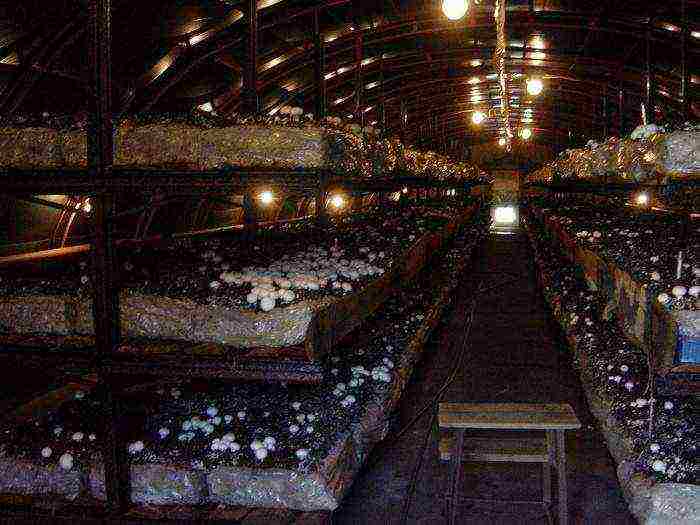
Advice! For the first experience, beginners can use ready-made briquettes consisting of champignon substrate and mushroom mycelium. All that remains is to get the briquettes out of the film, put them on racks and moisten them regularly. In the future, it is better, nevertheless, to prepare the substrate yourself, as it will cost less and increase the yield.
For planting champignons in the basement, you can use mycelium or grain spores of mushrooms. The mycelium is produced in special laboratories and is a mushroom embryo. This product can be frozen for long-term storage, and the mycelium is removed from the refrigerators a day before planting.
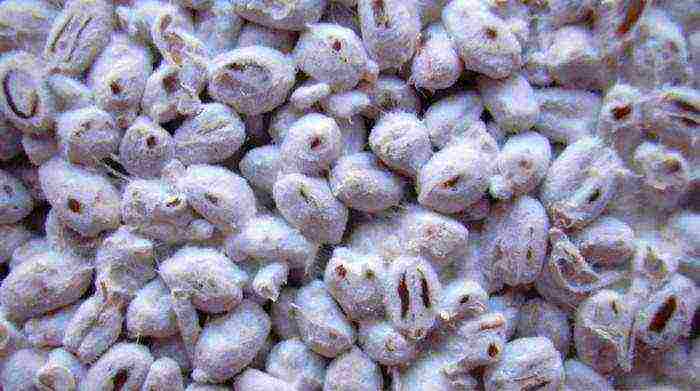
Spores are mushroom seeds. They can also be used by a mushroom picker, but mushrooms should be planted with spores somewhat differently than with the help of mycelium - the seeds are evenly scattered over the surface of the substrate and are not covered with earth, but only moistened.
Compost or substrate for mushrooms
The composition of the mushroom compost may differ slightly depending on the type of mushroom. Precise recommendations on this matter are easy to find on packaging with mycelium or spores.
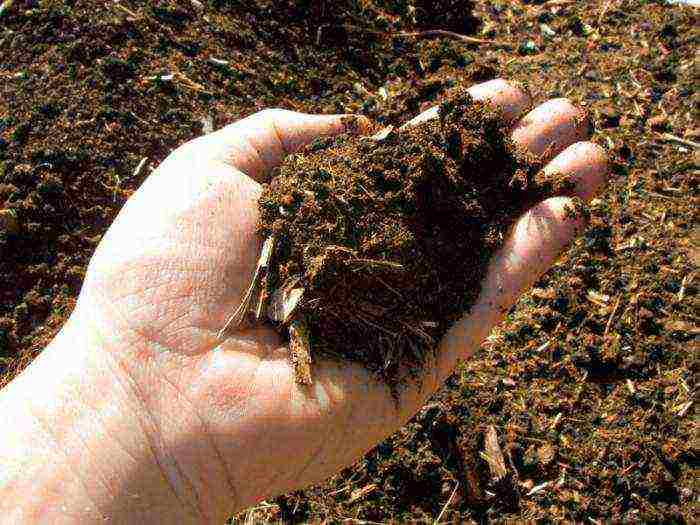
Horse manure is an ideal basis for mushroom compost, it is this component that ensures high yields of mushrooms. Instead of horse dung, you can use cow dung or replace it with bird droppings.
Important! Only manure from horses that ate hay, and not green mass, can be used to grow champignons.
But not fresh fertilizer is used as a substrate - for mushrooms, it is compost that is needed, that is, a fermented product. To prepare such soil you will need:
- manure;
- straw of wheat, barley or rye;
- urea;
- superphosphate;
- ammonium nitrate;
- gypsum, chalk or alabaster.
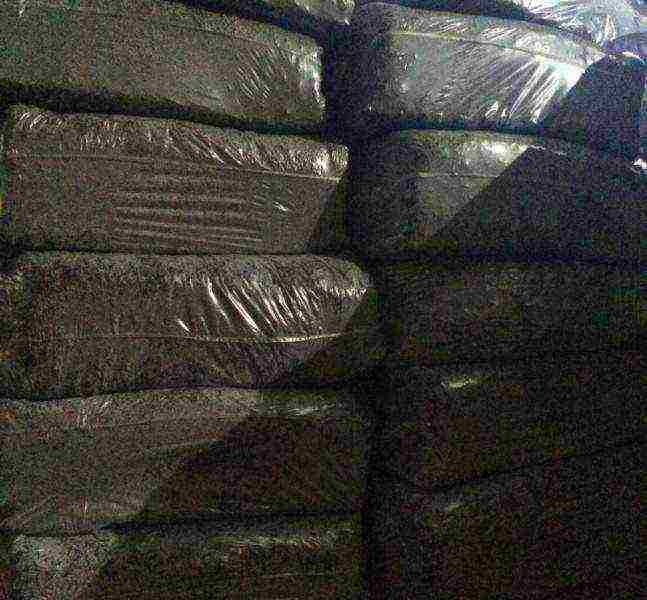
To prepare a substrate for growing champignons in the basement, you need to perform the following sequence of actions:
- Place the straw in a trough or other container and cover with warm water so that the straw is completely covered. Leave the straw to swell for a day - as a result, the volume should increase by 2-2.5 times.
- Lay manure and wet straw in layers of 15-20 cm - you will get high stacks of 7-8 layers. Each layer is additionally moistened with warm water.
- After 4 days, the compost is mixed with a pitchfork and urea and superphosphate are added to it - now a pungent nitrogen smell will appear.
- Stir the compost every 3-4 days, gradually adding all the other ingredients.
- In the last batch, plaster or alabaster is poured.
Composting consists in the process of fermentation - fermentation and processing of active components of manure. The whole process will take about 25-30 days. The readiness of the substrate will be indicated by its pleasant smell without nitrogen impurities and a brown tint.

Advice! A thermometer will help you easily find out when the mushroom compost is ready. If the mass is still fermenting, the temperature inside the stack will be 50-70 degrees. Reducing it to 24 degrees indicates that mushroom mycelium can already be planted in the substrate.
Planting and caring for mushrooms
The finished compost is placed in plastic or wooden boxes with a layer of about 20 cm. Now the seeds are sealed: 5 cm holes are prepared according to the 20x20 cm scheme and poured into each of them with a little crushed mycelium, covered with a substrate. Boxes of champignons are placed on the basement racks.
Watering champignons is strictly prohibited, but they need constant high humidity.This can be achieved by covering the drawers with newspaper or cloth and regularly dampening the cover with a spray bottle.
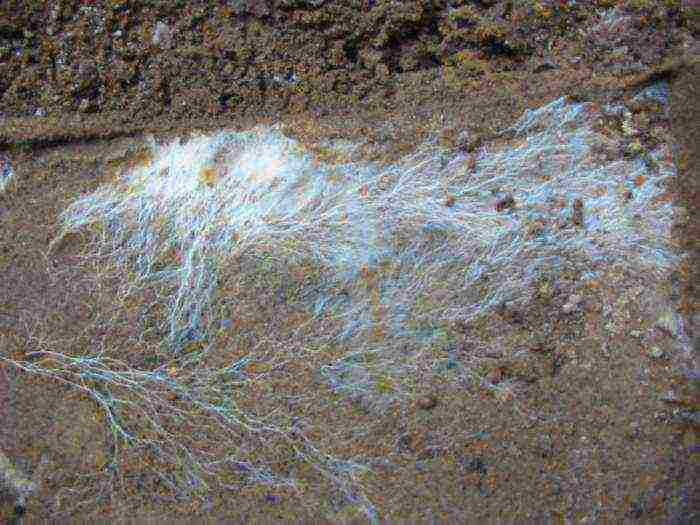
After a few days (5-7 days), white strings of myceliums should appear, which means that it is time to cover the seeds with a layer of special earth:
- 5 parts of peat;
- 1 part of chalk;
- 4 parts of treated soil.
The period of germination of the mycelium is called incubation, it lasts about 10-14 days and ends with the appearance of white peas - champignon rudiments. When the body of the mushroom grows, the stage is called pasture, during this period the boxes are taken out to a cooler room.
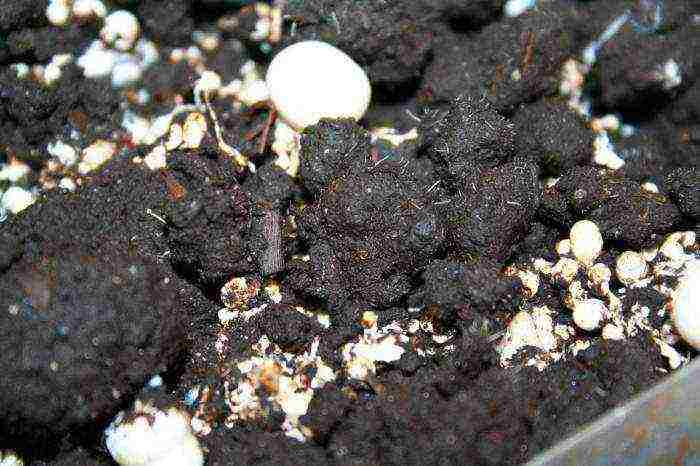
Growing mushrooms in a cellar takes 1 to 1.5 months. In one compost and from one mycelium, you can grow mycelium, which will give from 5 to 8 harvests. Only the first three harvests of champignons will be full-fledged, with each next time the harvest is poorer.
Attention! Champignons should never be cut with a knife - there is a high risk of infection in the "wound". Therefore, the mushrooms are slightly twisted and pulled out of the substrate, and then the leg is trimmed. The "stump" sticking out of the ground should be covered with compost.
Outcomes
Growing your own mushrooms in your basement can be a great family business. After all, this production does not require the connection of communications, the purchase of special equipment or expensive raw materials, in addition, the mushroom picker does not have to pay for the rent of the production area. Such a business pays off after the first harvest.

But a beginner must take into account all the "wishes" of the mushrooms: prepare the basement, arrange ventilation, maintain temperature and humidity, prepare high-quality compost. Only then will the myceliums in the basement please him with a good harvest.
- Cellar handle
- How to choose curtain hooks
- Do-it-yourself barbecue made of metal
- How to get rid of mold in your basement

